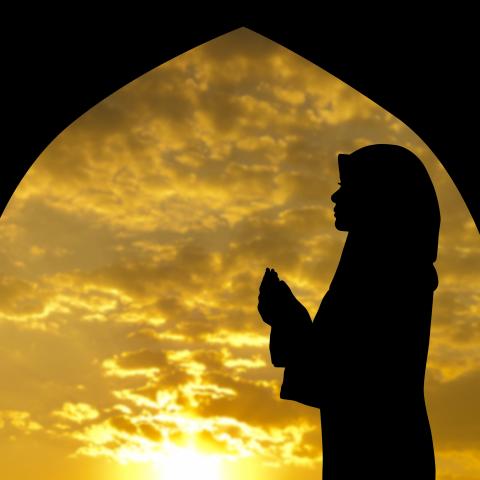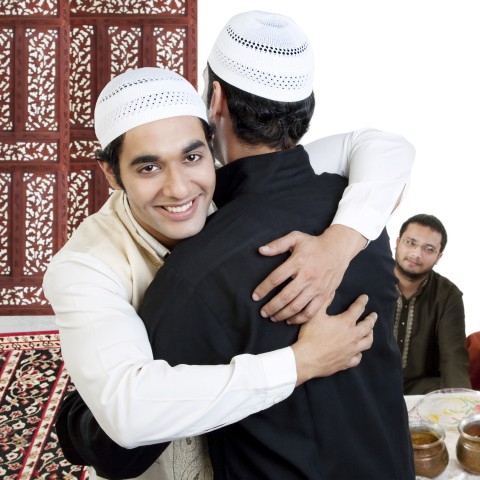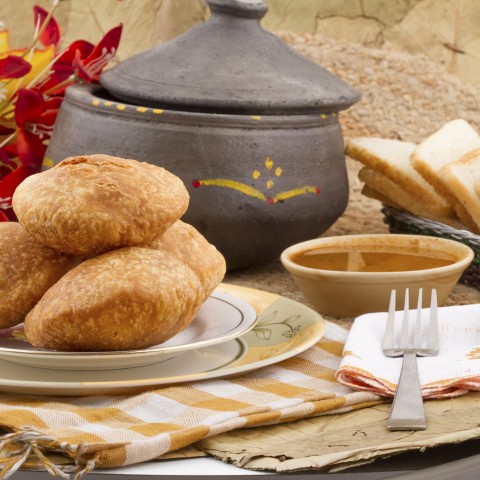
Community, charity, and great food. What could be better in a holiday?
The Eidul Adha holiday has all these things and more! In this article, you’ll learn about the Eidul Adha meaning in the Philippines, how Filipino Muslims celebrate, and why this day is so important.
Let’s get started!

1. What is the Eidul Adha Holiday?

Eidul Adha, often called “The Feast of the Sacrifice” in English, is one of the most important Muslim holidays worldwide.
It originates from the story of Ibrahim, who was willing to sacrifice his son Ismael. According to the Quran, Ibrahim had asked Allah to give him a son, and Allah did so. But as Ismael grew older, Ibrahim began having recurring dreams of slaughtering his son and realized it was an order from Allah to sacrifice his son. Upon Ibrahim telling his son this, Ismael told his father to do as Allah willed. Ibrahim prepared his son for the sacrifice and was about to slaughter him, but was stopped by a voice. This voice told him that the “vision” had already been completed. Ibrahim was given a lamb to sacrifice in Ismael’s place, and Ismael was revealed to be a righteous prophet.
Today, the Muslim selebrasyon (“celebration”) of this holiday focuses on selflessness and serves as a reminder that Allah blesses the faithful. Eidul Adha is also associated with the willingness to give up cherished possessions to glorify Allah.
- See our vocabulary list on Religion to learn the names of different religions in Filipino!
2. When is Eidul Adha This Year?

The date of Eidul Adha varies each year on the Gregorian calendar, as it takes place on the tenth day of Dhu al-Hijjah. The holiday then lasts for roughly three days.
Here’s a list of this holiday’s tentative start date for the next ten years.
| Year | Start Date |
|---|---|
| 2020 | July 31 |
| 2021 | July 20 |
| 2022 | July 10 |
| 2023 | June 29 |
| 2024 | June 17 |
| 2025 | June 7 |
| 2026 | May 27 |
| 2027 | May 17 |
| 2028 | May 6 |
| 2029 | April 24 |
Note that these dates may not be entirely accurate, and may vary. The date of Eidul Adha is officially determined each year by professional moon-sighters, and the dates above are only expected estimates.
3. How is Eidul Adha Celebrated?

In the Philippines, the most popular way to celebrate Eidul Adha is to visit a moske (“mosque”) and listen to an Eid khutba (“sermon”). Muslims gather together for prayers, and many people like to wear new clothing on this occasion. They often give each other Eidul Adha wishes and other kind words. These Eidul Adha greetings often involve a friendly yakap (“hug”) in the spirit of community and friendship.
In light of Ibrahim’s willingness to sacrifice his son—and Allah’s last-minute provision of a lamb—some Muslims in the Philippines make an animal sakripisyo (“sacrifice”) on this day. The animal’s meat is then divided into three portions: one portion to give to the poor, one portion to bring home to one’s family, and one portion to give to other relatives. Those who don’t make a sacrifice may still purchase large pieces of meat to give away and prepare for themselves.
It’s important to note that on Eidul Adha, the animal sacrifice is not made as an atonement for sin, and it’s said that the blood and meat of the sacrifice don’t even reach Allah. The sacrifice has more to do with generosity, which is why a third of it is given as zakat al-fitr (charity in the form of food). This willingness to give up some of one’s possessions for those in need is said to please Allah and show one’s devotion to Him.
- What’s Your Favorite Filipino Food? Find out in our vocabulary list, and get your taste buds ready for Eid in the Philippines!
4. Two Popular Mosques in the Philippines
While the Philippines has a large Catholic Christian population, the country still has quite a few mosques. There are two, in particular, that are worth noting:
- Sheik Karimol Makdum Mosque (1380) – The oldest mosque in the Philippines.
- Al-Dahab Mosque (1976) – The largest mosque in the Manila area, often dubbed the Golden Mosque.
You can read more about these and other Filipino mosques on Wikipedia. And don’t forget to check out our list of the Top Tourist Attractions in the Philippines while you’re at it!
5. Vocabulary for Eid in the Philippines

Let’s review some of the Filipino vocabulary words and phrases from this article!
- “Eidul Adha” — Eidul Adha [n]
- “Hug” — Yakap [v]
- “Fasting” — Pag-aayuno [v]
- “Sermon” — Khutba [n]
- Charity in the form of food — Zakat al-fitr [n]
- “Break fast” — Pagtigil ng pag-aayuno
- “Blessed Eid” — Eid Mubarak
- “Mosque” — Moske [n]
- “Prayer” — Panalangin [n]
- “Sacrifice” — Sakripisyo [n]
- “Celebration” — Selebrasyon [n]
- “Blessed” — Pinagpala [adj]
- “Greetings” — Pagbati [n]
Remember that you can find each of these words with audio pronunciations on our Filipino Eidul Adha vocabulary list for pronunciation practice!
Final Thoughts
The importance of Eidul Adha in the Philippines can’t be overstated. It’s a time of community, giving, and sacrifice, and the holiday embodies so many core values of the Muslim religion.
What are your thoughts on this holiday? Is there a similar celebration in your country or faith? Let us know in the comments!
To continue learning about Filipino culture and the language, study these free resources straight from FilipinoPod101.com’s blog:
- The Bonifacio Day Anniversary in the Philippines
- How to Celebrate the Filipino-Chinese New Year
- Celebrating the Day of Valor in the Philippines
- Essential Vocabulary for Life Events in Filipino
- FilipinoPod101’s Essential Filipino Travel Phrase Guide
FilipinoPod101 has you covered for all of your language-learning needs and cultural interests! Create your free lifetime account today and take advantage of our numerous learning tools: themed vocabulary lists, spaced-repetition flashcards, audio and video lessons, and so much more.
Stay safe out there, and happy Filipino learning!










